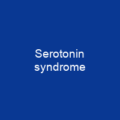Lupus, also known as systemic lupus erythematosus (SLE), is an autoimmune disease where the immune system attacks healthy tissue in various parts of the body. Symptoms vary among people and can be mild to severe, including painful joints, fever, chest pain, hair loss, mouth ulcers, swollen lymph nodes, fatigue, and a red rash. The cause of SLE is not clear but may involve genetics and environmental factors such as female sex hormones, sunlight, smoking, vitamin D deficiency, and certain infections. Diagnosis can be difficult and is based on symptoms and laboratory tests. There is no cure for SLE, but treatments include NSAIDs, corticosteroids, immunosuppressants, hydroxychloroquine, and methotrexate. Men have higher mortality rates due to cardiovascular disease, which is the most common cause of death. SLE affects women more often than men, especially those between 15 and 45 years old, with African, Caribbean, and Chinese descent having a higher risk. Rates vary between countries from 20 to 70 per 100,000. The disease was named ‘Lupus’ in the 13th century due to its resemblance to a wolf’s bite rash. SLE often mimics or is mistaken for other illnesses, making diagnosis challenging, and symptoms can come and go unpredictably. Because these symptoms are often seen with other diseases, they don’t meet SLE criteria but are suggestive when combined with others. SLE is more common in women and has distinct symptom profiles for males. – Females: – Greater number of relapses – Low white blood cell count – More arthritis, Raynaud syndrome, psychiatric symptoms – Males: – More seizures – Kidney disease – Serositis (lung and heart inflammation) – Skin problems, peripheral neuropathy 70% of people with lupus have skin symptoms. The three main categories are chronic cutaneous, subacute cutaneous, and acute cutaneous lupus. – Chronic cutaneous: thick, red scaly patches on the skin – Subacute cutaneous: red, scaly patches of skin with distinct edges – Acute cutaneous: rash Hair loss, mouth and nasal ulcers, and lesions are other possible manifestations. Joint pain is common in SLE patients. – Joint or muscle pain affects over 90% of those with lupus – Less disabling than rheumatoid arthritis – Rarely causes severe joint destruction People with SLE are at risk for osteoarticular tuberculosis and may develop bone fractures in young women. Anemia develops in about 50% of children with SLE. Low platelet count, low white blood cell count, and antiphospholipid antibody syndrome are also common. SLE can cause pericarditis, myocarditis, endocarditis, atherosclerosis, and pleurisy. Steroids used for treatment increase risk for heart disease, high cholesterol, and atherosclerosis. Pleuritic pain and inflammation of the pleurae (pleurisy) occur in SLE patients, which can lead to shrinking lung syndrome involving reduced lung volume. Other associated lung conditions include pneumonitis, chronic diffuse interstitial lung disease, pulmonary hypertension, pulmonary emboli, and pulmonary hemorrhage. Painless passage of blood or protein in the urine may often be the only presenting sign of kidney involvement. Acute or chronic renal impairment may develop with lupus nephritis, leading to acute or end-stage kidney failure. The histological hallmark of SLE is membranous glomerulonephritis with ‘wire loop’ abnormalities. Neuropsychiatric syndromes can result when SLE affects the central or peripheral nervous system. Neuropsychiatric disorders include headache, cognitive disorder, mood disorder, cerebrovascular disease, seizures, polyneuropathy, anxiety disorder, psychosis, depression, and personality disorders. Common eye diseases associated with SLE are dry eye syndrome, secondary Sjögren’s syndrome, episcleritis, scleritis, retinopathy, ischemic optic neuropathy, retinal detachment, and secondary angle-closure glaucoma. Medications used to treat SLE can also cause eye disease. While most pregnancies have positive outcomes, there is a greater risk of adverse events occurring during pregnancy. SLE causes an increased rate of fetal death in utero and spontaneous abortion (miscarriage). Neonatal lupus is the occurrence of SLE symptoms in an infant born from a mother with SLE, usually benign and self-limited. Medications for treatment of SLE can carry severe risks for female and male reproduction. Cyclophosphamide can lead to infertility by causing premature ovarian insufficiency (POI), and methotrexate can cause termination or deformity in fetuses. Fatigue in Systemic Lupus Erythematosus (SLE) may be related to factors such as disease activity, complications, pain, depression, poor sleep quality, physical fitness, and lack of social support. Vitamin D deficiency has been found to occur often in patients with SLE, particularly those with more active disease. Studies have shown that vitamin D treatment can reduce disease activity in some patients. However, the effectiveness of vitamin D in treating SLE is not clear-cut, as studies have yielded conflicting results. The proposed middle ground for using vitamin D is to treat patients with low serum levels below 30 ng/ml or between 36-40 ng/ml in those with major organ involvement. Genetic mutations have been identified as a cause of SLE, particularly childhood-onset SLE (cSLE). About 40 genes have been reported to cause cSLE and/or similar disorders. These genes include genes related to immunity, such as DNASE1L3 and TREX1. Mutations in multiple genes can also contribute to the development of SLE or an SLE-like syndrome, often in combination with environmental factors. SLE is regarded as a prototype disease due to its overlap in symptoms with other autoimmune diseases. Patients have higher levels of DNA damage than normal subjects, and several proteins involved in genomic stability show polymorphisms that increase SLE development risk. Drug-induced lupus erythematosus is a reversible condition that usually occurs in people being treated for long-term illness, mimicking SLE but generally resolving once the medication is stopped. The most commonly associated drugs with drug-induced SLE include antiarrhythmic agents, antihypertensive agents, antimicrobial agents, and agents inhibiting inflammation-inducing actions. Discoid (cutaneous) lupus is limited to skin symptoms and is diagnosed by biopsy of rash on the face, neck, scalp, or arms. Approximately 5% of people with discoid lupus progress to systemic lupus erythematosus. SLE triggers are unknown but involve environmental factors that lead to immune system activation against self-protein, particularly nuclear proteins. The disease is a chronic inflammatory condition believed to be a type III hypersensitivity response with potential type II involvement. People with SLE have intense polyclonal B-cell activation, memory B cells with defects in signaling and co-stimulation, and T cell dysfunctions. Cytokines such as BLyS, interleukin 6, and TNFα are involved in the inflammatory process and are potential therapeutic targets. SLE is associated with low C3 levels in the complement system, increased apoptosis and necrosis in lymphocytes, and abnormal expression of Fas on B cells and T cells. The presence of uningested apoptotic nuclei outside of normal phagocytic cells may present a threat to tolerization of B cells and T cells. Dendritic cells in germinal centers may endocytose antigenic material and activate T cells. Apoptotic chromatin and nuclei attach to follicular dendritic cells, activating other B cells. Necrosis increases in T lymphocytes due to mitochondrial dysfunction, oxidative stress, and ATP depletion. Impaired clearance of dying cells is a potential pathway for systemic autoimmune disease, including SLE. Defects in apoptotic clearance lead to the development of antinuclear antibodies. Monocytes isolated from people with SLE show reduced expression of CD44 surface molecules involved in phagocytosis. Serum components important for efficient phagocytosis are often missing or diminished. Macrophages during SLE fail to mature their lysosomes, leading to impaired degradation of internalized apoptotic debris and chronic activation of Toll-like receptors. Intact apoptotic debris recycles back to the cell membrane and accumulates on its surface. Impairment in degrading neutrophil extracellular traps (NETs) is also associated with SLE. Clearance deficiency leads to increased appearance of apoptotic cells, stimulating inefficient clearance and maturation of dendritic cells. Autoimmunity results from extended exposure to nuclear and intracellular autoantigens derived from late apoptotic and secondary necrotic cells. B and T cell tolerance for apoptotic cells is abrogated, leading to inflammation and production of autoantibodies. In germinal centers, ineffective clearance of apoptotic cells leads to a buildup of debris in some people with SLE. Follicular dendritic cells attach antigen material to their surface but do not take it up or present it via MHC molecules. Autoreactive B cells can emerge during somatic hypermutation and migrate into the germinal center light zone. Autoreactive B cells do not usually survive due to lack of signals from antigen on follicular dendritic cells. In cases of clearance deficiency, these autoreactive B cells may receive survival signals, leading to chronic autoimmune diseases. Anti-nRNP autoimmunity targets restricted proline-rich motifs, but subsequent antibody binding spreads to other epitopes. Elevated expression of HMGB1 has been found in patients with systemic lupus erythematosus (SLE) and is thought to contribute to the disease’s pathogenesis. Diagnosis of SLE typically involves laboratory tests such as antinuclear antibody (ANA) testing, indirect immunofluorescence, direct immunofluorescence, and other tests that assess autoantibodies, complement system levels, electrolytes, kidney function, liver enzymes, and complete blood count. Several techniques are used to detect ANAs, including indirect immunofluorescence, direct immunofluorescence, and multianalyte panels (MAPs) of autoantibodies. These tests can help distinguish between SLE and other connective tissue diseases, as well as monitor disease activity and identify potential risks for complications such as heart conduction block in neonatal lupus. Some physicians diagnose Systemic Lupus Erythematosus (SLE) based on the American College of Rheumatology (ACR) classification criteria. However, these criteria were established for research purposes and may not be suitable for individual diagnosis. The ACR established eleven criteria in 1982, which include: 1. Malar rash 2. Discoid rash 3. Serositis 4. Oral ulcers 5. Arthritis 6. Photosensitivity 7. Blood disorders (hematologic) 8. Renal disorder 9. Antinuclear antibody test positive 10. Immunologic disorder (anti-DNA, anti-Smith antibodies, etc.) 11. Neurologic disorder The criteria have sensitivity and specificity rates for each symptom: – Malar rash: 57% sensitive, 96% specific – Discoid rash: 18% sensitive, 99% specific – Serositis: 56% sensitive, 86% specific (pleurisy more sensitive, pericarditis more specific) – Oral ulcers: 27% sensitive, 96% specific – Arthritis: 86% sensitive, 37% specific – Photosensitivity: 43% sensitive, 96% specific Other symptoms that may be present in SLE include fever, fatigue, hair loss, and Raynaud syndrome. Recursive partitioning has been used to identify more parsimonious criteria for diagnosis. Two classification trees were found: 1. Simplest tree: SLE diagnosed if immunologic disorder or malar rash is present (92% sensitivity, 92% specificity) 2. Full tree: Uses six criteria and has 97% sensitivity, 95% specificity Alternative criteria have been suggested. There is no cure for Lupus. Treatment involves preventing flares and reducing severity, using corticosteroids and anti-malarial drugs. Certain medications like cyclophosphamide can increase risks of infections and other complications. Hydroxychloroquine was approved in 1955, and belimumab (Benlysta) was approved in 2011 for pain and flare-ups common in Lupus. Disease-modifying antirheumatic drugs (DMARDs) like hydroxychloroquine and immunosuppressants are used to prevent flares and improve survival. Immunosuppressive drugs like corticosteroids and mycophenolic acid can be used for more severe cases, but carry risks of side effects. Some drugs already FDA-approved for rheumatoid arthritis are limited due to toxicity. Analgesia: Stronger prescription painkillers (opioids) may be used for chronic pain in SLE patients, but long-term use carries risks of tolerance and addiction. Intravenous immunoglobulins (IVIGs) may control SLE with organ involvement or vasculitis by reducing antibody production or clearing immune complexes, without suppressing the immune system. Lifestyle changes: Avoiding sunlight and fatigue-inducing activities, exercising to improve fatigue, and avoiding occupational exposure to certain substances are crucial for managing SLE. Kidney transplantation is a treatment option for end-stage kidney disease caused by lupus nephritis, but recurrence rates can be high. Antiphospholipid syndrome is associated with antiphospholipid antibodies and thrombosis, requiring early detection through brain scans and anticoagulation. Management of pregnancy: Pregnant mothers with SLE should remain under medical care, as SLE poses a higher risk of complications in the mother and newborn. Women pregnant with anti-Ro (SSA) or anti-La antibodies often have echocardiograms during pregnancy to monitor heart health. Women with Systemic Lupus Erythematosus (SLE) are advised to use contraception and prevent pregnancy due to the disease’s harmful effects on women who become pregnant during active disease. No cure for SLE exists, but many treatments are available. Mortality rates from SLE are higher compared to people without the disease. Prognosis is typically worse in men and children than in women, but symptoms after age 60 tend to have a milder course. Early mortality within five years is due to organ failure or overwhelming infections, which can be prevented with early diagnosis and treatment. The global rate of SLE varies widely between countries, ethnicity, and sex. The disease affects approximately 20-70 per 100,000 people worldwide. In the US, one estimate suggests the total affected population is 322,000 to over 1 million (98 to over 305 per 100,000). The rate is higher in non-European descent individuals, with rates as high as 159 per 100,000 among Afro-Caribbean populations. Socioeconomic status also plays a significant role in the onset and persistence of SLE. Women with SLE and lower socioeconomic status have higher depression scores, body mass index, and restricted access to medical care compared to those of higher socioeconomic statuses. People with SLE from lower socioeconomic backgrounds reported more anxiety and depression. Race affects the rate of SLE due to social support, but studies show that controlling for socioeconomic status eliminates racial differences in disease progression. Racial differences are likely due to socioeconomic factors rather than biological ones. SLE affects females 9 times more frequently than males, primarily due to hormonal mechanisms such as estrogen and androgen levels, GnRH signalling, and genetic influences on the X chromosome. The rate of SLE increased from 1.0 in 1955 to 7.0 in the United States, but research has not been conducted to determine if changes in socioeconomic factors contributed to this increase. The history of Systemic Lupus Erythematosus (SLE) can be divided into three periods: classical, neoclassical, and modern. Research and documentation advanced understanding and diagnosis, leading to its classification as an autoimmune disease in 1851. There are several explanations for the term lupus erythematosus, including Latin for ‘wolf’ and Ancient Greek for ‘redness of the skin’. The term originated from a mid-19th century description of ulcerating sores on the legs, attributed to Italian physician Rogerius Frugard. The classical period (Middle Ages) saw limited resources and no formal treatment for the disease. The neoclassical period began in 1851 with Pierre Cazenave’s documentation of discoid lupus, distinguishing it from other skin diseases. Ferdinand von Hebra documented physical effects and insights into internal trauma, while Moritz Kaposi observed two forms of the disease: skin lesions and systemic disorders. Sir William Osler expanded knowledge of systemic diseases in his work on erythema exudativum multiforme and added ‘systemic’ to the term lupus erythematosus. The 19th century saw continued research into SLE, including observations of its remitting and relapsing nature and relationship between skin and systemic manifestations. Further study of SLE led to a third paper in 1903 documenting various afflictions. Research began in 1920 and led to detailed pathologic descriptions of lupus, kidney, heart, and lung tissue damage, as well as the discovery of the LE cell in 1948. The LE cell was part of an anti-nuclear antibody reaction, where the body produces antibodies against its own tissue. A test for ANA replaced the LE cell test, which is rarely performed today due to variable results. The American College of Rheumatology established a list of clinical and immunologic criteria in 1971, initially revised in 1982 and further improved in 2009. Quinine was first reported as an effective therapy in 1894, followed by salicylates, with corticosteroids introduced later. Research into belimumab, a monoclonal anti-BAFF antibody, led to its FDA approval in 2011. Genetically engineered immune cells are being studied, with promising results published in 2022 using CAR T cells. 
You want to know more about Lupus?
This page is based on the article Lupus published in Wikipedia (retrieved on December 10, 2024) and was automatically summarized using artificial intelligence.







